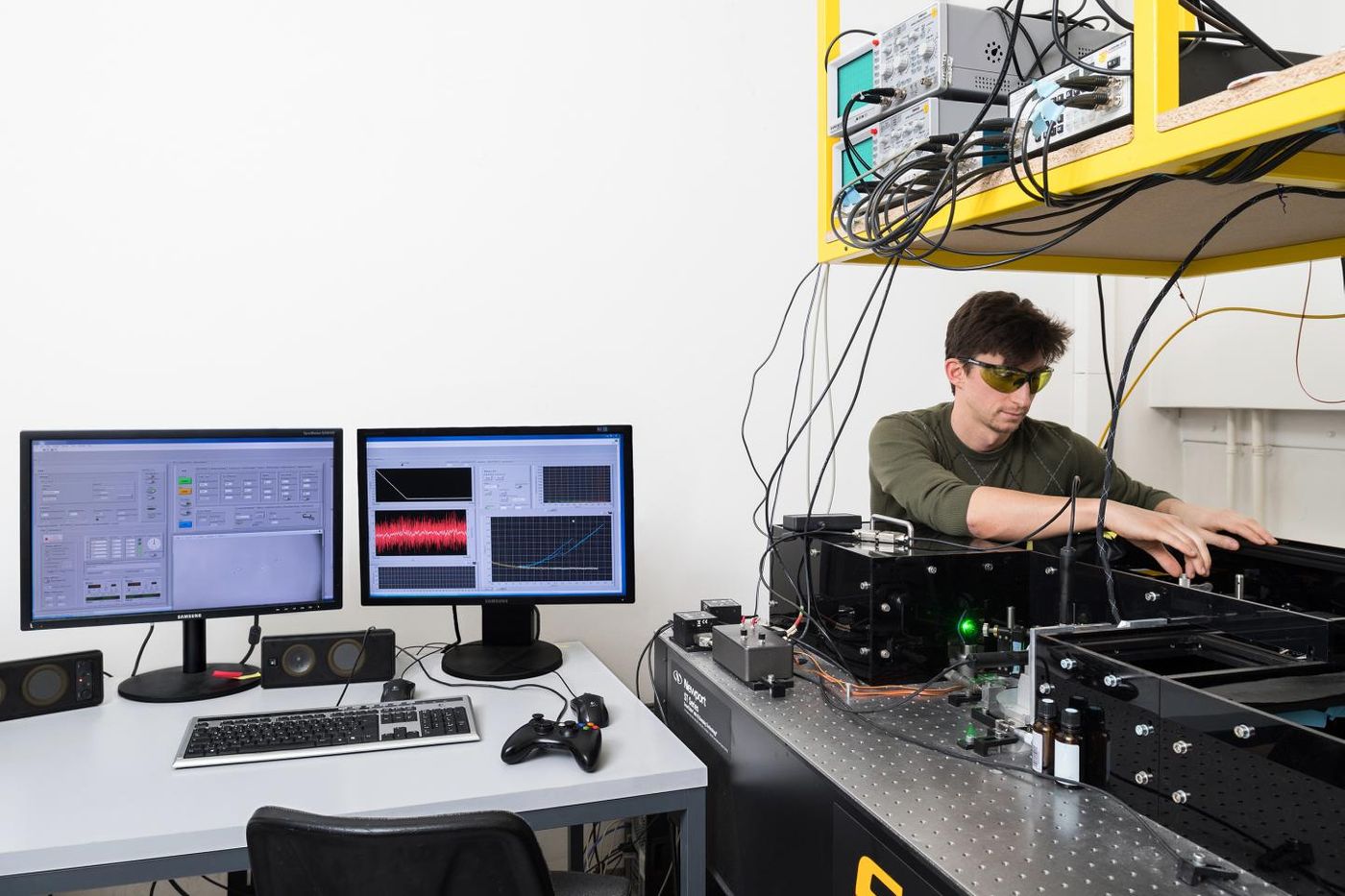"Optical Tweezers" Reveal Heart Muscle Network
A unique new study incorporated laser beams to study the cohesion between two proteins that provide a structural foundation for the body’s muscles, including the heart. From the Technical University of Munich, researchers introduce their “optical tweezers.”
The study focused on measuring the forces between two cardiac muscle-stabilizing building blocks: titin and alpha-actinin. "There must be forces that stabilize the individual chains, the filaments,” said Professor Matthias Rief. “Otherwise, muscles would fall apart. But, until now, nobody has tracked down the source of these forces.”
Titin, the longest protein in the human body, pairs with alpha-actinin, which anchors titin to the muscle tissue. This bond allows expansion but prevents the muscle from destroying itself in the process. For every titin strand, there are seven alpha-actinin proteins providing a foundation, a finding made by the University of Vienna scientists with which the Munich researchers were collaborating.
"In total, the bonds are sufficient to stabilize the muscle," Rief explained. "The protein network is not only stable, but also extremely dynamic. Our measurements show that the proteins release their bond when they are pulled apart. But as soon as the stretching force abates they reconnect."
Their unique tool dubbed “optical tweezers” includes lasers, optics, cameras, and monitors to observe titin and alpha-actinin in action. Doctoral student Marco Grison explains the process:
"Using the laser beams we can position the globules close enough to each other that the two proteins can interlink. In a second step, we increase the distance between the laser beams and, thereby, between the globules, until the proteins are stretched to their limit. The bonding force between titin and α-actinin can then be calculated from this distance."
The optical tweezers helped the researchers discover that the protein bond between titin and alpha-actinin can resist a force of five piconewtons, also one-billionth the weight of a bar of chocolate. "Such small forces should not be able to hold a muscle together for long,” Rief explained.
It’s not just the heart that’s benefiting from the complex bond between titin and alpha-actinin. The pair provides a structural foundation for all stretching muscles. In the future, Rief and his team anticipate applying their research to developing treatments for genetic diseases like muscular dystrophy and congestive heart failure.
Rief's study was recently published in the Proceedings of the National Academy of Sciences.
Source: Technical University of Munich










